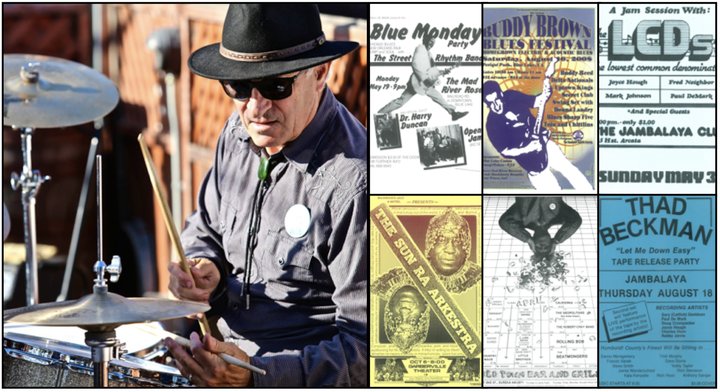
Paul DeMark, drummer and Humboldt music fan. Scroll down for a collection of his old local concert posters
Live music and Humboldt County have always been synonymous to me. It’s what brought and kept me here.
But because of COVID it has been an eerily quiet musical year in Humboldt. Here, live music ceased to exist a year ago. With vaccination numbers increasing, bands are cautiously considering outdoor bookings this spring at venues like the Mad River Brewery in Blue Lake. No one knows when it will be safe for indoor clubs to host live music, but hope is in the air.
I know Humboldt musicians are eager to play with each other and for audiences after a year sabbatical. I’ve loved playing my drums every day in my studio, but drums and drummers are made to play with other people.
Over the last 12 months, I’ve thought a lot about how Humboldt music lovers have been spoiled over the decades by the relative large numbers of venues in relation to population. This includes music festivals — Mateel Community Center’s Summer Arts and Music Festival, the Humboldt Folklife Festival, Reggae on the River, the Redwood Coast Music Festival and The Buddy Brown Blues Festival, to name a few.
For decades there have been a multitude of nightclubs throughout the county presenting live music. The Mateel and HSU’s CenterArts have provided a remarkable wealth of concerts for more than 40 years. It will be interesting to see if both of these organizations will continue to book shows when it’s safe.
Over the past year I’ve also remembered what the scene was like “back in the day.” I moved to Humboldt from San Francisco in March 1975 to play six months of guaranteed gigs drumming with The Coopers every Friday and Saturday at the Rendezvous Lounge in Rio Dell. We were paid $50 per night to play four sets of country dance music. I figured if I didn’t like Humboldt at the end of six months, I could move back to San Francisco.
Minimum guarantees of $50 per musician a night were common in those days, especially for weekend gigs. As a single person, I could pay most of my bills in 1975 with eight $50 gigs a month. According to the U.S. Department of Labor’s Consumer Price Index, $50 in 1975 would be worth $243 in 2021 adjusted for inflation. In 1981, $50 would translate to $144. The $50 per-night guarantee per musician was standard through the ‘90s, especially on the weekends. Most clubs had a cover charge of $2 to $3 in the ’70s and ’80s. The clubs hired a door person to take money to pay for the bands and their job.
A band would play four sets from 9:30 p.m. to 1:30 a.m. Popular bands would often play several encores before the clubs would kick people out at 1:45. After packing up a few things, bands often were often invited to the after-hours parties with fellow night owls. Sometimes we made our own party.
At the end of my six months at The Rendezvous, I decided I could make a modest living here in Humboldt. I knew a lot of other musicians felt the same way about trying to live the dream of being a full-time musician. The cost of living was cheap and people were loving life.
The ’70s through the ’90s were a great time to be a musician and music lover here. Humboldt was humming with live music clubs by the mid-to-late ‘70s. Arcata had the original Jambalaya Club, now The Jam. In 1973, Fred Neighbor and Joyce Hough, who now perform in the Home Cookin’ band, bought a down-on-its-luck bar just off the Plaza on H Street called Dan and Jerry’s. Fred remembered its last days when the owner couldn’t afford electricity so he provided lit candles on the tables. On the bar’s shelves stood only a few lonesome liquor bottles.
Fred and Joyce turned the Jambalaya into a down-home cultural center for Arcata’s rapidly expanding counterculture and intellectual scene. The club featured something every night of the week — poetry readings, jazz, folk and bluegrass music on weekdays, dance bands on the weekends. Fred and Joyce’s highly popular Freddy and the Starliners group played a weekend or two a month. (A side note: When I started playing with Fred a few years later, he said, “I hate the name Freddy.”)
By the time I moved to Arcata in 1976, the scene was happening. There were no videocassettes, cell phones, cable or internet. People in their 20s and early 30s constantly went out to dig live music. Downtown Blue Lake had two rocking clubs with bands across the street from each other, Walt’s Friendly Tavern and The Mad River Rose. Throngs of young people, including HSU students, would saunter between the two clubs and dance up a storm, getting high and having a blast.
By 1978, I was playing in Caledonia, a roots American music dance band, with Fred and Joyce, Charles Horn and Chuck Garrett. Because of Fred and Joyce’s huge popularity, we had a built-in, and growing, audience. We played the Rose one weekend a month. We’d play every weekend at a different club earning our $50 each per night around 12 shows a month.
These were not the one-night stands that most bands have played in Humboldt over the past 20 years. We’d play two, three and four nights in a row, often to full houses. A great benefit: We could leave our equipment in the club and get out relatively early at 2 a.m.
In addition to The Jambalaya, Arcata had The Keg in Northtown, The Phoenix on Ninth Street and Bret Harte’s, located in the basement of the Jacoby Storehouse. On Eureka’s Second Street, within four blocks of each other, stood Chris “Showtime” Smith’s Vance Log Cabin, Fog’s (now The Booklegger), and the Old Town Bar and Grill. Numerous other clubs like the Den and Captain’s Galley also hired bands. Southern Humboldt offered live music at venues like The Riverwood Inn, as well as The Mateel’s old Fireman’s Hall, The Cellar and the Branding Iron, all in Garberville.
In my opinion, and with no disrespect intended toward other clubs, The Old Town Bar and Grill, once located at 327 Second St., was the coolest nightclub Humboldt has ever seen. The Siren’s Song occupies about 1/10th of the space the Bar and Grill had. It could easily fit 350 people into the two-story, red-brick-walled building. It had a big stage and a fulltime sound person, usually the late, great Sean Bohannon and, later, the very much still alive and excellent Russ Cole.
It had a large dance floor and a balcony that cut through the length of the club where one could watch the dancers and band from above. It featured booths and sofas sprinkled throughout the two floors where people hung out and sometimes made out. Behind the spacious, high stage, a beautiful, sound-absorbing dark velvet blue curtain covered the 20-foot glass windows overlooking Second Street.
The talented and charismatic Robert Cray Band traveled from their home in Eugene, Oregon, to play three nights of soul and blues at the Bar and Grill every six weeks. When they played, the full house danced and rocked with a joyous vibe. We all knew The Robert Cray Band was going to make it big. They were just that good every night. We felt lucky they came so often.
In January 1980, a 23-year-old Deborah Lazio was asked to start booking the empty, family-owned Old Town Bar and Grill. Her father, Laurie Lazio, had opened it up about four years earlier as a restaurant and nightclub. He closed it and was trying to sell it when Deborah moved back to town after college. Laurie wanted the club to show some life with live music so that it be sold easier.
She started booking local bands on the weekends. They included Dr. Ross and the Hellhounds, Airhead, Flex, Buckshot, Swingshift, The Beatmongers, Caledonia, Bishop Mayfield and Mason Dixon, to name a few. After some months of success, Lazio began presenting national acts in addition to the local bands. The venue was becoming successful, so the Lazio family decided to keep it going and see what would happen.
The national acts she produced over nearly 20 years included Bonnie Raitt, Los Lobos (admission $3!), Etta James, Sam and Dave, Boz Scaggs, The Band, Tower of Power, David Lindley, Buddy Guy and Junior Wells, Junior Walker and the All-Stars, and the Neville Brothers. Deborah hired local bands to open for these acts, often playing in front of full houses. The times were good.
I believe the pent-up demand for live music will attract crowds at outdoor facilities when it’s safe. Humboldt potentially still has many clubs. I hope these venues have survived this extremely difficult year.
Let’s hope the good times will roll again. I think we’ll be ready.
# # #
And now, a few mementos from Humboldt shows past:

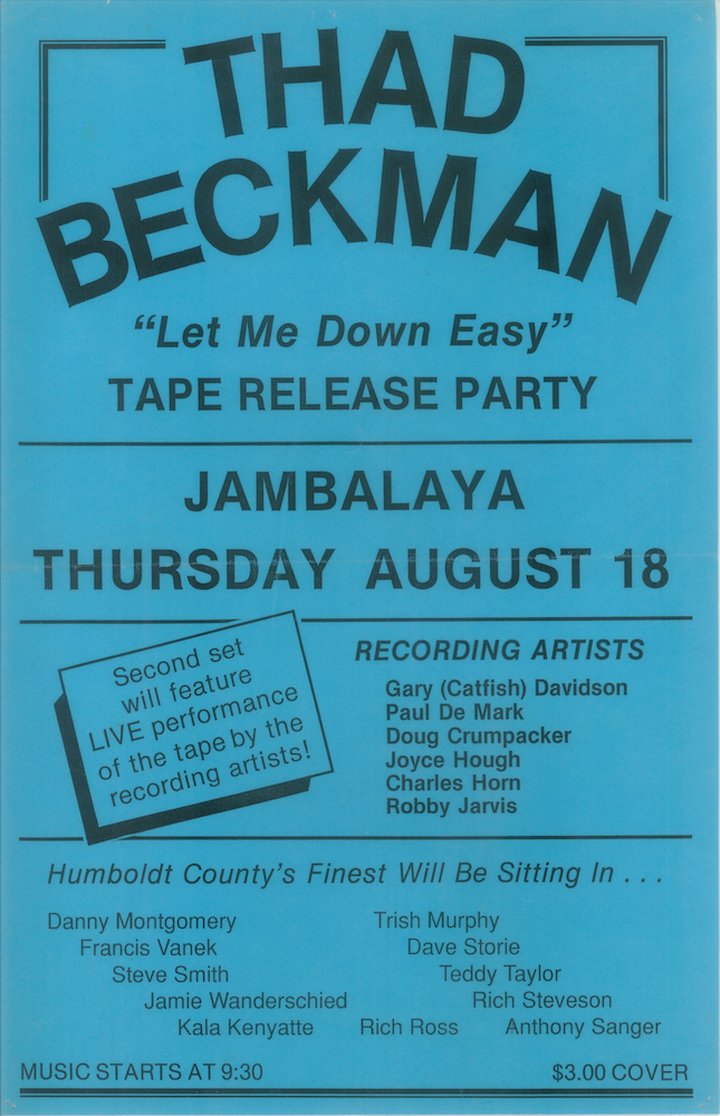
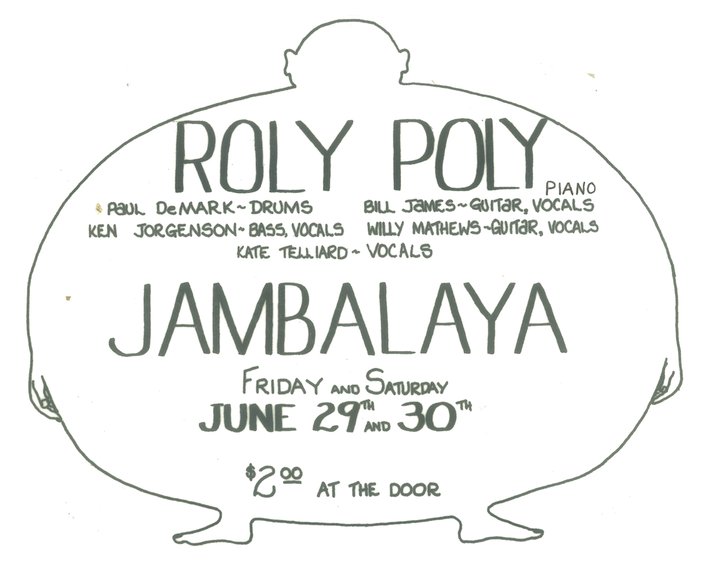
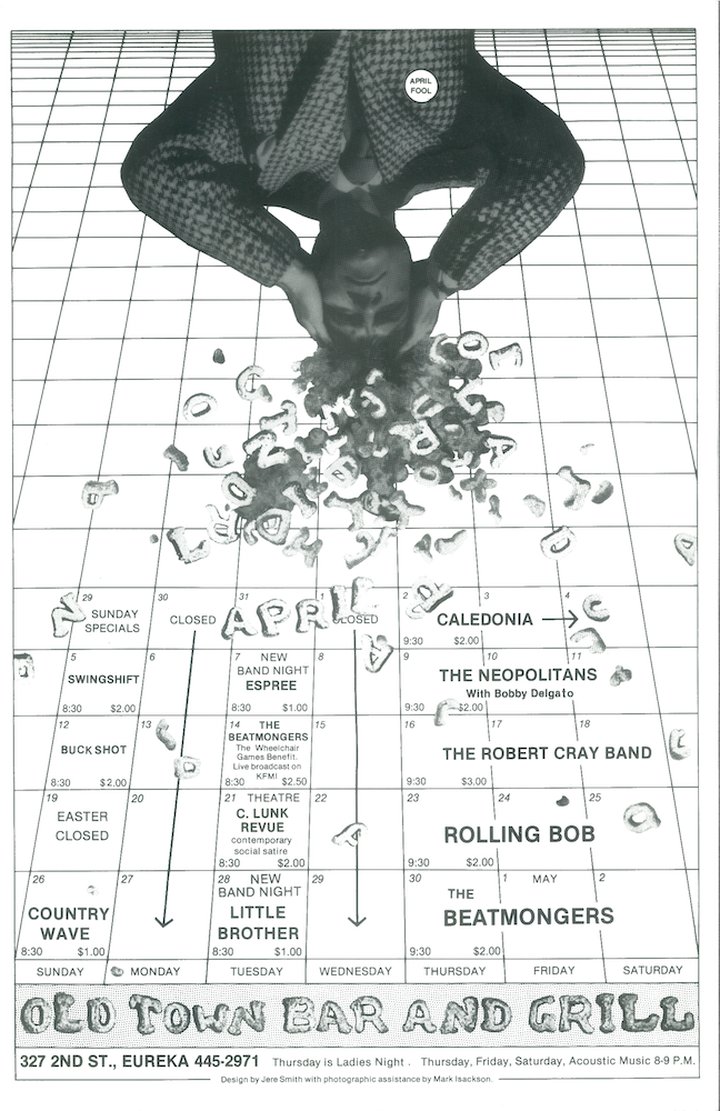

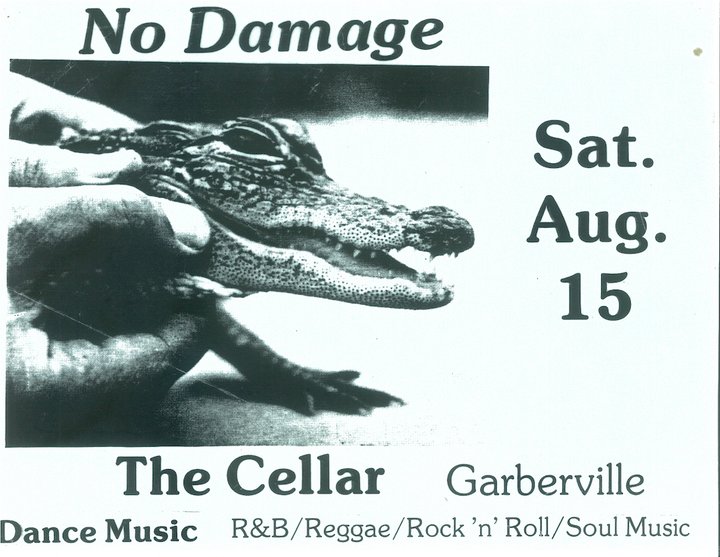
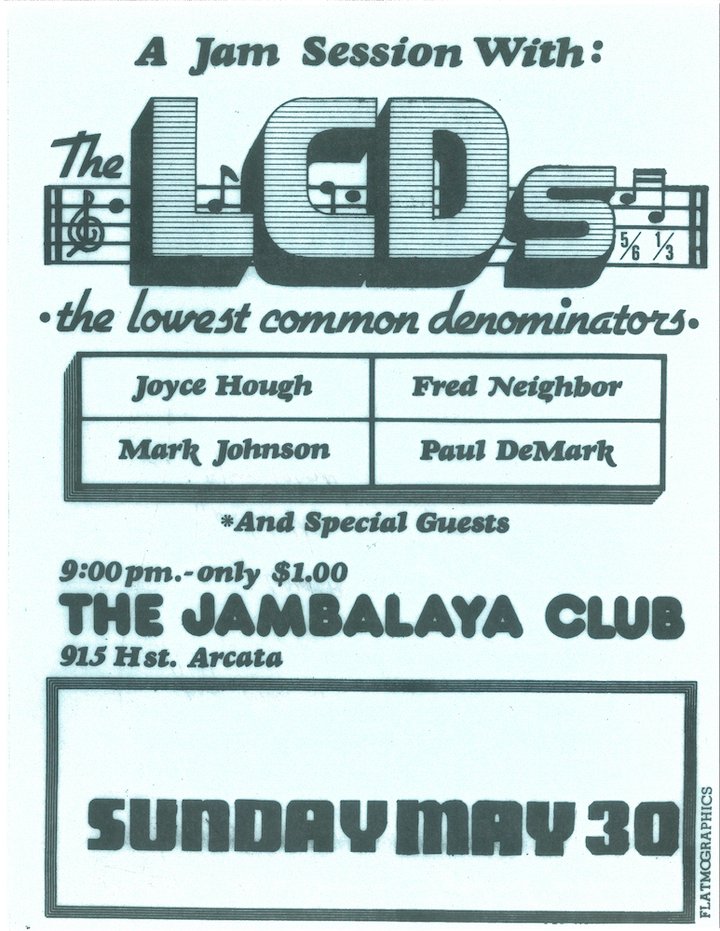
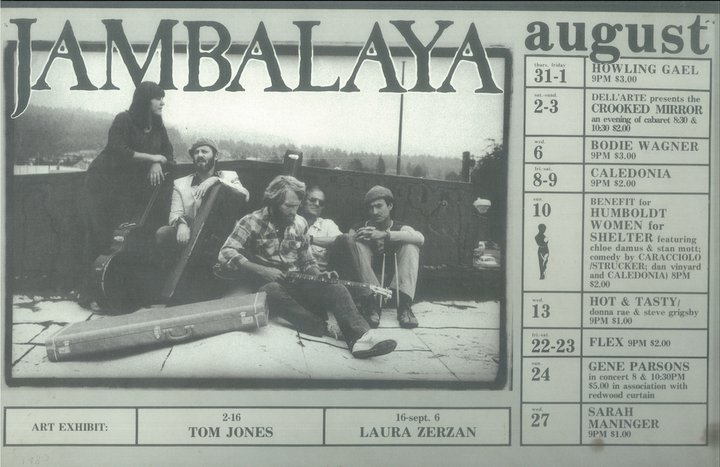
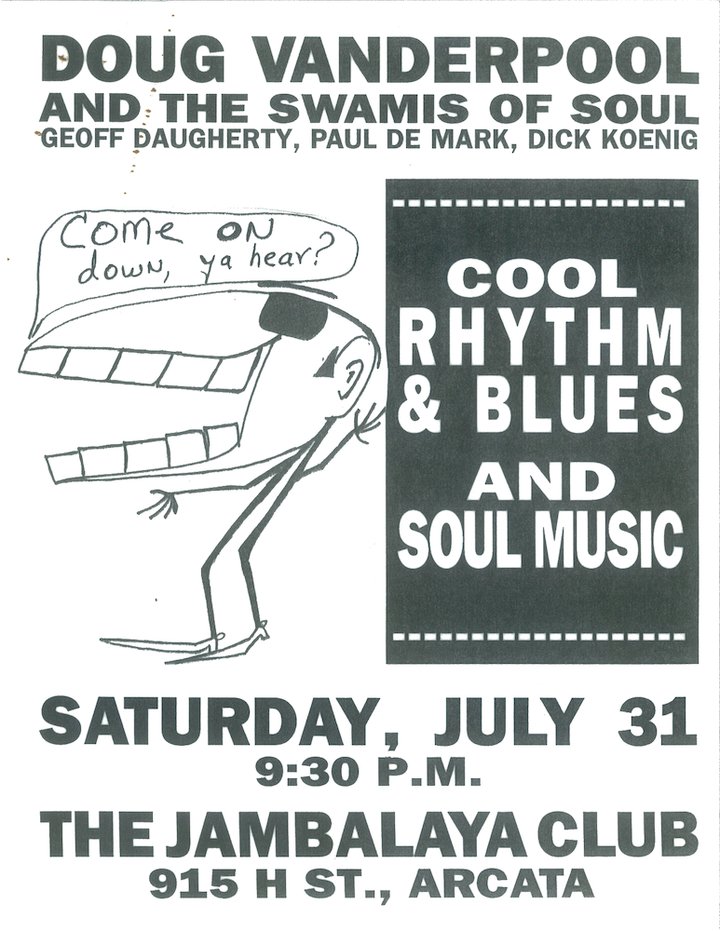
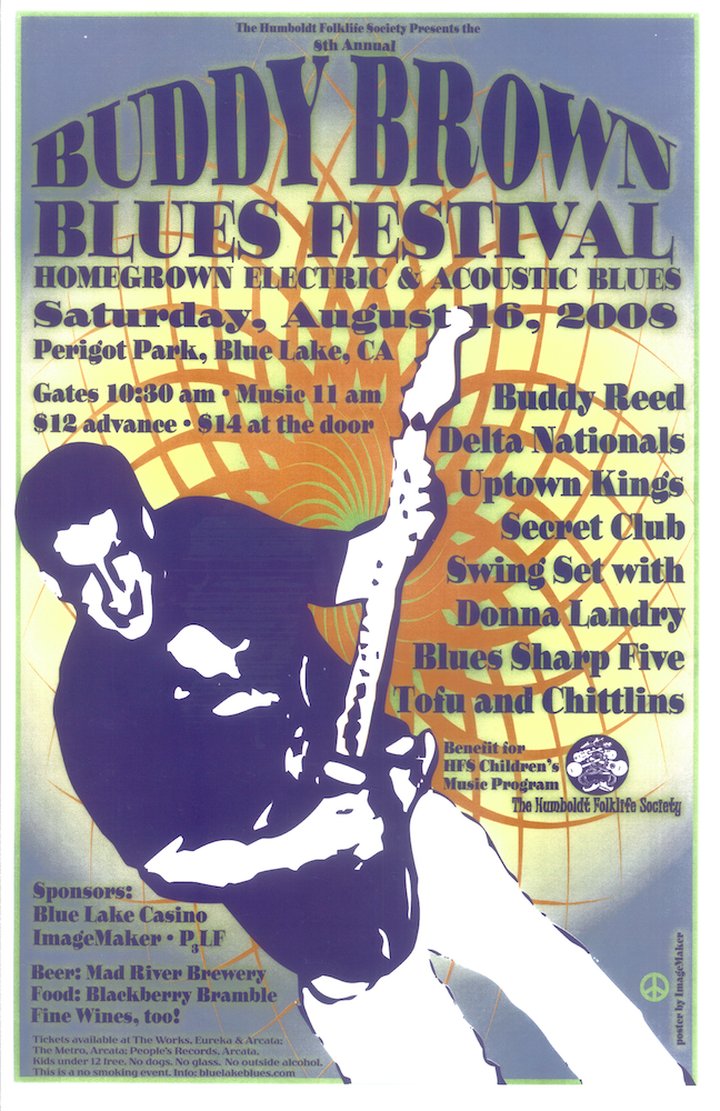
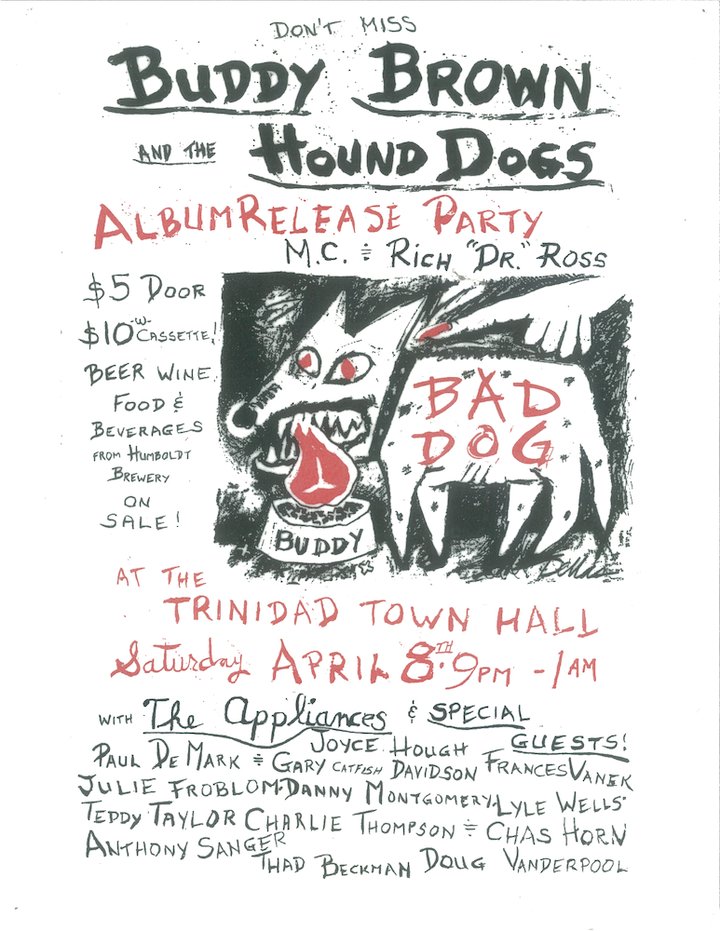
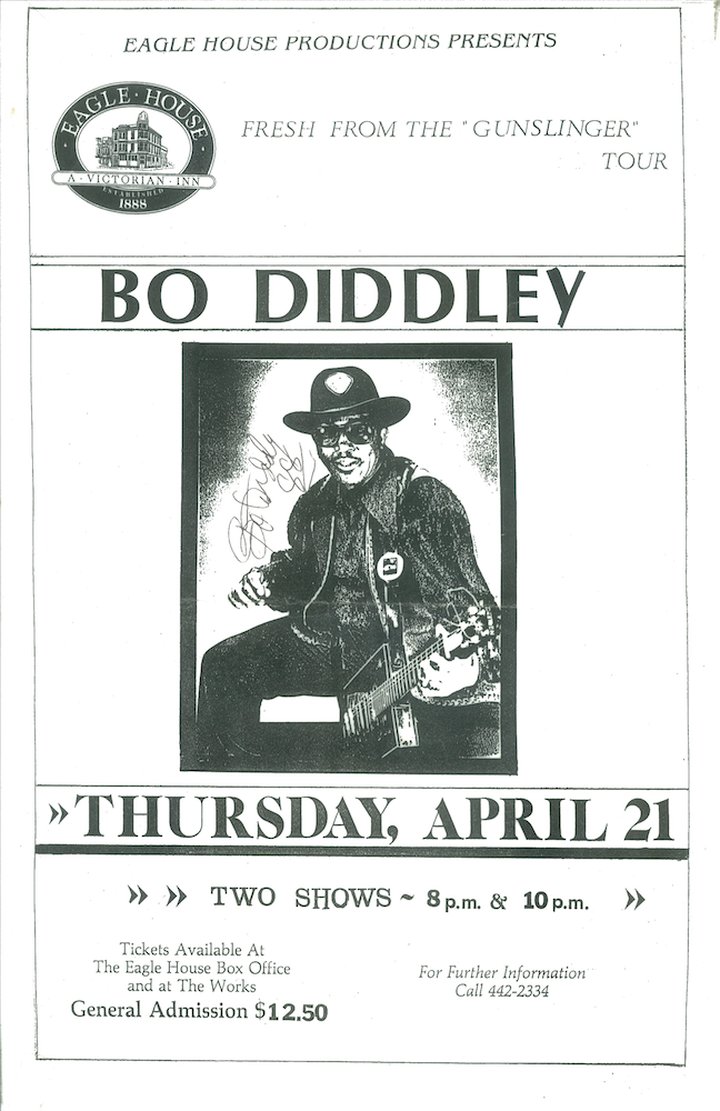

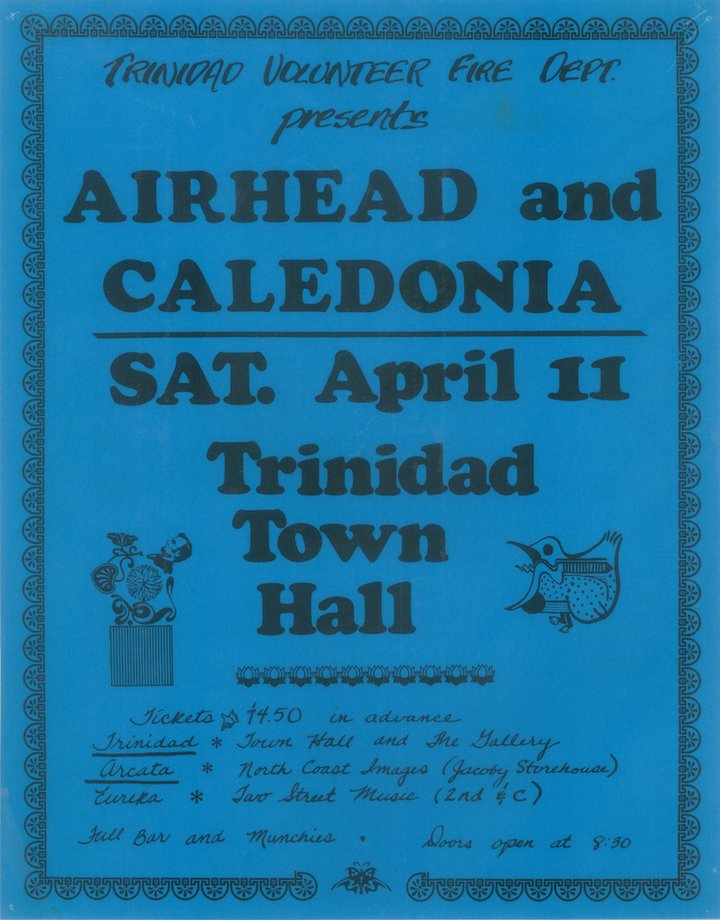
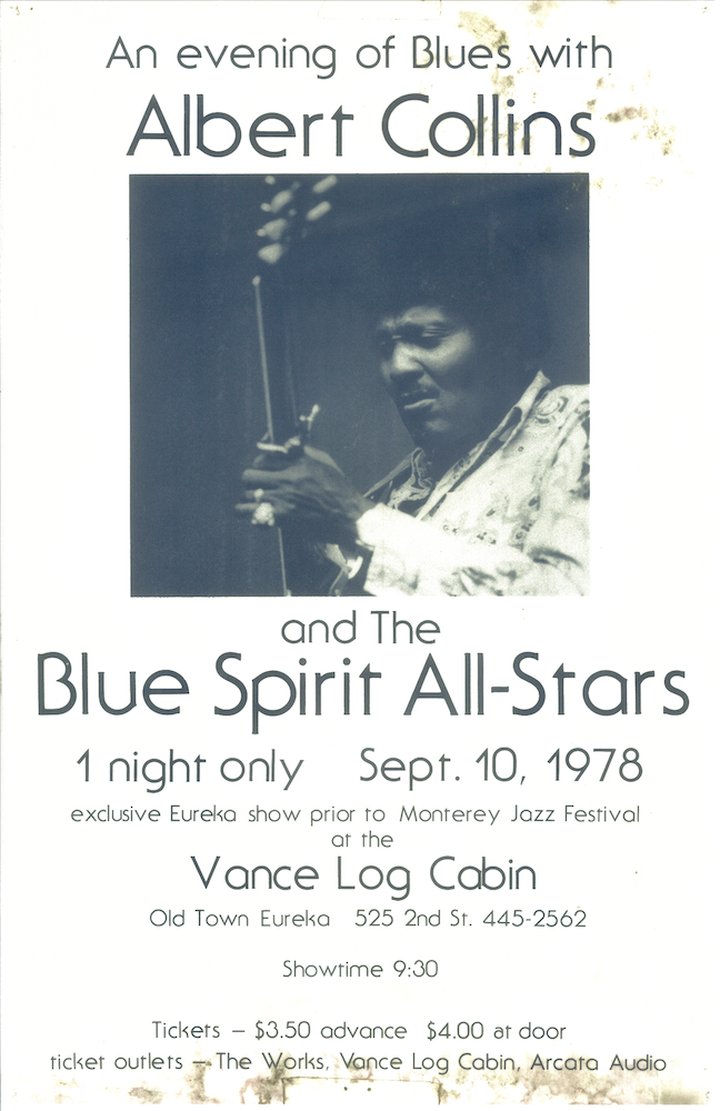
CLICK TO MANAGE